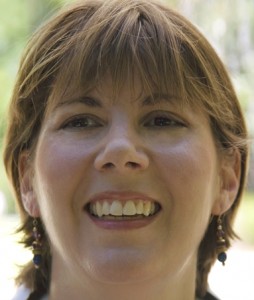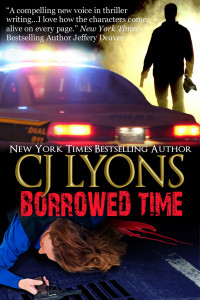If you’re thinking of dipping your toe into the murky waters of Indy e-pubbing – you’re going to want to read this! Help me welcome CJ Lyons!
Advice on why and how to self e-publish your books from New York Times and USA Today bestseller CJ Lyons. CJ has had two indy e-published books appear on the USA Today list and one debut on the combined print/e-book New York Times list at #2. This book alone sold 230,000 copies in only two months and has sold in almost a dozen countries. In addition to her six traditionally published novels, CJ now has nine books self e-published with sales of almost half a million books in 2011 alone.
Part one explores the pitfalls of indy e-publishing. Part two explores the practical how-tos.
Part One: Start with Why

One way of doing this is to self e-publish your backlist or other books you hold the rights to. With more and more readers embracing e-books and e-books becoming the fastest growing segment of publishing, the idea of cutting out the middle-men and keeping profits for ourselves is tempting.
Here are a few things to think about before walking the path of electronic self-publication:
Why self e-publish?
Like many authors, once I was firmly established with NYC publishers, I never thought about e-publishing or self-publishing, much less doing both!
But I found myself with four manuscripts that were all previously in the hands of NYC publishers but for a variety of reasons never made it to publication. Then I saw a blog by multi-published thriller author JA Konrath discussing his own experiment with electronic self-publishing. His argument was logical, the numbers impressive, but I was still skeptical.
I wanted these books to find an audience but I didn’t want to tie them to contracts I might later regret, especially as these four novels were all romantic suspense/thrillers and my career has moved to more mainstream suspense/thriller. In December, 2009, I decided to perform my own self-publishing experiment.
I realized I could use these books as promotional products as well as money-makers. Since I was in control of when they were released, how long they were available, and what their price was, I had far greater freedom than I do with my traditionally published works.
In fact, this was the deciding factor for me—my personal ultimate why. My traditionally published books were being released about once a year. But my readers were demanding more books, faster.
What better way to keep my readers happy than to indy e-publish?
When I found my why: putting my readers first, the rest came easy. In fact, focusing on that one question every step of the way, “will this make my readers happy?” made every decision I faced a simple one.

The same with others who were unpublished and simply interested in name recognition and building a readership, or those who wanted to hit a bestseller list and use their indy success to negotiate better traditional contracts.
Know your why and everything else falls into place.
Pitfall #1: Know Your Audience
Anyone deciding to self-publish should have a good grasp of their target audience. You want to build an audience who will stay with you and help spread the word of your books–and that means making a promise to always deliver a high quality read.
In other words, just as in mainstream publishing, indy e-publishing is still ALL about the reader.
It’s not about clearing your closet of dusty manuscripts just because you can. Unless you plan on giving your work away for free, your goal is to attract paying customers for future books. The books you self e-publish need to be just as good as any book a NYC publisher is selling.
If you have a backlist you own the rights to, they’ve already been professionally edited, so you’re good to go. Do be aware that publishers own the cover art, so you’ll need to create a new cover for your e-book.
Even if your why is to make money fast, ala John Locke, you need to understand the buying habits of your target audience. What price point earns you maximum profit (not sales, but actual profit)? What kind of books sell best at that price point? Does your target audience buy at that price point? How can you maximize profits?
Pitfall #2: Build Your Team
If you’re planning to release a book that hasn’t been previously published, make certain it is professionally edited. The four books I chose for my initial experiment were all edited prior to self-publication–three by NYC editors (before their road to publication went astray) and one by a professional freelance editor. Do not rely solely on your critique partners or your Great Aunt Martha who gushes to her bridge club about your writing!
Remember, not only are you competing against NYT bestsellers, you’re also selling a product to a consumer. If you expect to win their hard earned money–and more importantly, their time, attention, and future sales loyalty–then you need to create a worthy product.
In addition to getting extensive feedback from my critique partners (all multi-published, awarding-winning bestselling authors) I also hire a cover artist and two editors (one developmental, one for copyedits) for each book I publish.
Which means planning to spend some money (or barter if you have friends who are professionals in these fields) as part of your initial start up plan.
Also, just like any business venture, you need to weigh the effect of indy publishing on your current business partnerships. Let your agent and publisher know of your plan. Address how your indy books will fit into your overall marketing scheme and brand building. Make sure you plan release dates and promotional efforts that will augment any traditionally published books you have coming out.
If done correctly, your indy e-books could be your best marketing tools!
My agent loved the idea of my e-pubbing when I presented it to her as a way for me to keep my readers happy while increasing name recognition between traditionally published books. She earns nothing from my direct e-sales, but represents these books for sub-right sales and during any negotiations with traditional publishers.
I can also thank my indy e-book success for my new contract with Minotaur Books. They saw potential for a series in BLIND FAITH, my NYT bestseller, and with our very first conversation we discussed how to integrate my indy publishing (no way am I going to stop that—it’s what is keeping my readers happy!) with their traditional publishing release of the new series. They’re even bringing the new books out very close together, despite their being hardcovers, something unheard of in NYC publishing even six months ago!
I have my readers to thank for a lot of this success and consider them an essential part of my team. Over 13,000 of them have signed up for my newsletter and many of them have gone on to join my Street Team Family.

Success in indy e-publishing doesn’t happen overnight. In general, it takes several months to begin to build sales (usually 4-6) and having multiple titles (again, usually 4-6) out there to continue to drive that momentum.
If you’re unpublished, with no established readership, I would recommend waiting until you have two to three manuscripts polished and ready to go. Make sure they’re aimed at the same target audience in order to maximize their effectiveness.
Launch the first, making as big of splash as possible—consider pricing it as a loss-leader or even giving it away in exchange for folks signing up for your mailing list or utilize other techniques/social media to use it to build a readership.
Once you have some good reviews and your first book is gaining momentum, launch the second and third.
Don’t obsess over numbers—but do pay attention when something does drive sales. It might be a mention on a particular blog or you changing the price (sometimes raising the price is just as effective as lowering it, so don’t be afraid to experiment) or a good review.
Some authors have found success in buying blog ads/sponsorships. I haven’t. For me, concentrating on my readers via a newsletter has been much more cost effective. But when you’re starting out, definitely budget some time and money to try different approaches and see what avenue works best for your audience.

How best to grow a readership? More books. Correction. More books that they want.
I recently launched the third in the Hart and Drake medical suspense series based solely on readers requesting it. Within one day it was hitting the Amazon bestseller lists. I thought it would be the last in the series, but I’ve already had over a hundred letters asking for Book #4 and the third book, FACE TO FACE, has only been out a month, so yes, somehow I’m going to find time to write Book #4.
The same happened with my Shadow Ops series (if you’re a fan, Billy and Rose’s story is coming soon, I promise!) and my Lucy Guardino FBI Thriller series—which began as a standalone in SNAKE SKIN but so many fans begged for “More Lucy, please!” that a second book is coming out early 2012.
Now my biggest problem is finding time to write all these books in between my traditional publisher’s deadlines.
Knowing how fast you write and what other resources you have to keep readers engaged (back list books, short stories, etc) is vital when creating your business plan.
The pros and cons of indy e-publishing are a highly individual equation. If you’re already having trouble finding time to finish books (especially if you have deadlines to meet), then you might want to wait on indy e-publishing until you have rights back to your backlist and won’t have to worry about scheduling writing time.
If you aren’t already published or are published but interested in writing in a new genre (which entails building a new readership) then the time commitment indy e-publishing requires might be worth it for you.
Do understand that it is a business and treat it as such. That means keeping up with all aspects of the business, not just the fun part of telling a damn good story.
You’ll need to learn how to manage the money, both coming in and going out. How to read the terms of agreement so you don’t accidentally violate them. How to use social media and other resources to spread the word. Building a mailing list and maintaining it. Negotiating foreign rights (if you don’t have an agent), audio rights, and other sub-rights. How to work with freelance artists and buy stock art without infringing on copyright. How to hire editors. How to obtain your copyright and ISBN numbers—and do you even need them?
We’ll be talking more about these nuts and bolts in Part Two. In the meantime, NoRulesJustWRITE.com has a collection of resources on entrepreneurship, the publishing business, and how to start your indy e-publishing career.
Questions? Post them in the comments and I’ll stop back!
Thanks for reading!
CJ